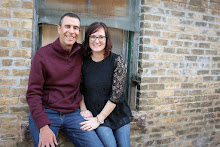I was the first appointment of the day in the radiology department at the hospital and they got me all set up in the dark room. Unfortunately Nick wasn’t allowed in the room, so I waited and waited all alone. (As if I didn’t feel alone enough already!) It seemed to take forever before someone finally came in and said Dr. Not-The-Best-For-Me would be there shortly. I figured he must be delivering a baby or something exciting like that. I could sacrifice and wait for that, even though now I was going to be even later to work! When Dr. Not-The-Best-For-Me arrived, he apologized for being late. He said he was at home and had forgotten about my appointment. (Ouch…that’s nice…at least he was honest, I guess.)
The Hysterosalpingogram is an x-ray test that looks at the inside of the uterus and fallopian tubes. It determines the shape of the uterus and the patency of the tubes. A radiographic contrast (dye) is injected through a catheter that is put through the vagina and into the uterus. The uterine cavity fills with dye and if the fallopian tubes are open, dye fills the tubes and spills into the abdominal cavity. Pictures are taken using a steady beam of x-ray as the dye passes through. The photos can show problems such as an abnormal structure or a blockage that would prevent an egg from moving through the tubes into the uterus or prevent sperm from moving into the fallopian tube and fertilizing with an egg. They can also see from this if the uterine wall has any polyps, tumors, or scar tissue.
Fortunately, mine came back clear and everything seemed to be normal. Dr. Not-The-Best-For-Me told us that this dye test can slightly increase your odds of conception the few months following. It could be due to the flushing of the tubes that could open a very minor blockage and sort of “clean it out.” So, we left feeling excited for this month of trying. This could be the month…woo hoo!
This photo (not of me) is of a uterus/fallopian tubes/ovaries. The white is the dye injected which shows there is no blockage.












No comments:
Post a Comment